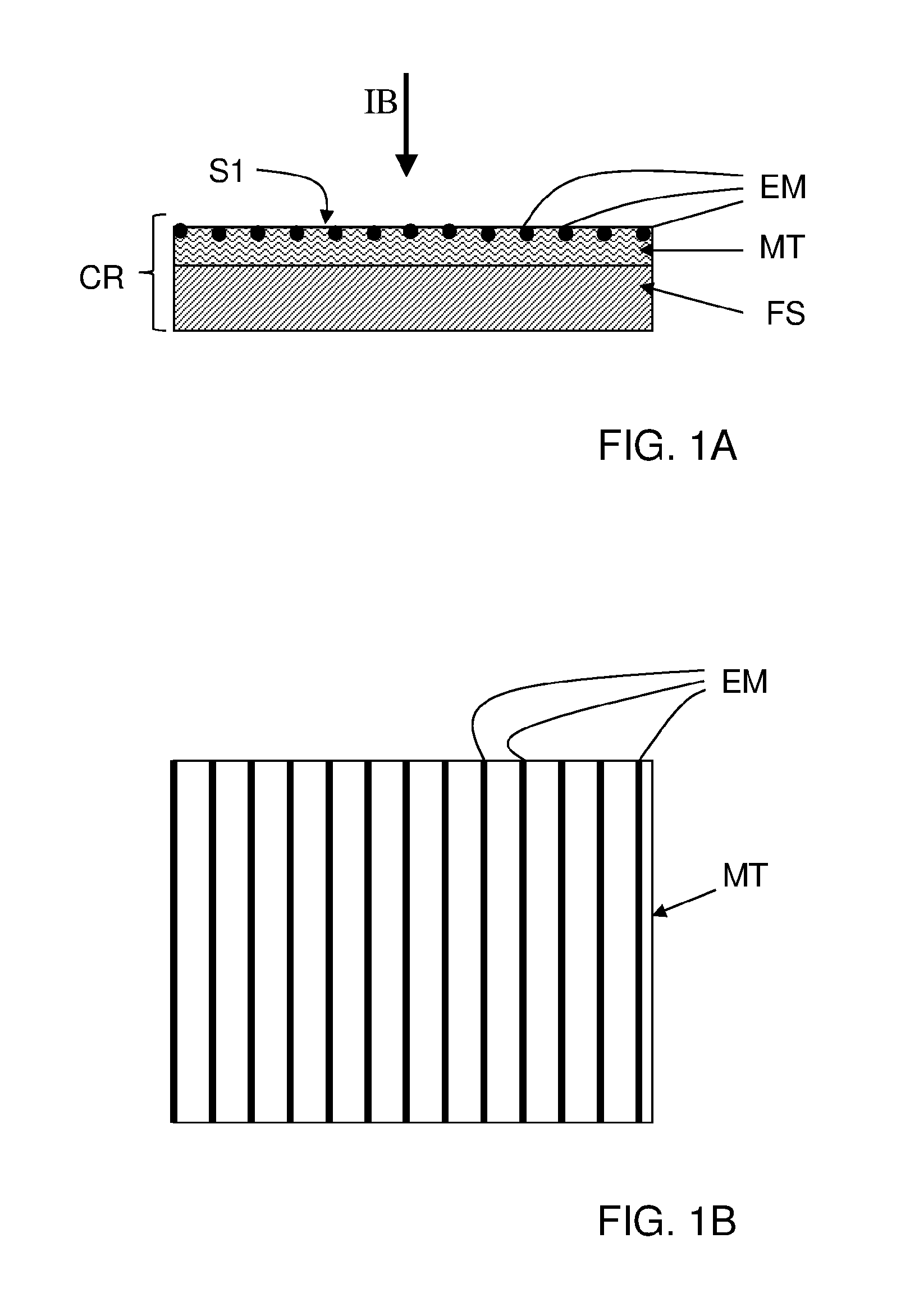Method and System for Providing a Carrier with an Embedded Patterned Metal Structure
a metal structure and polymer foil technology, applied in metal working equipment, manufacturing tools, welding/soldering/cutting articles, etc., can solve the problem that the finished product on stock may no longer be suitable for manufacturing new products, and achieve the effect of facilitating debris removal and facilitating debris removal
- Summary
- Abstract
- Description
- Claims
- Application Information
AI Technical Summary
Benefits of technology
Problems solved by technology
Method used
Image
Examples
experiment 1
[0083]A carrier provided at a first side with an initial embedded patterned metal structure was prepared. To that end a 125 micron thick, thermally stabilized PEN foil from Dupont-Tejin films was used upon which a patterned metal structure was printed formed by a set of parallel lines having a width varying in the range of 100 to 2000 micron. The patterned metal structure was deposited on the PEN-foil by screen printing. A DEK Horizon 03i screen printer with a SD40 / 25 400 mesh screen was used for this purpose. Material Inktec TEC-PA-010 hybrid nano silver paste with a silver content of 55±10 wt % was used. This silver paste is a blend of silver nano particles and a soluble silver complex.
[0084]The patterned metal structure was embedded in an Ormostamp resist layer.
[0085]In a next step the carrier with the initial embedded patterned metal structure was irradiated at its second side opposite the first side with a radiation beam from a pulsed infrared laser, here a Nd-YAG laser with a ...
experiment 2
[0091]In this second example a Suntronic Ag based ink was used to apply an initial patterned metal structure with a thickness of 150 nm. A
[0092]Pixdro printer with Dimatix printer head was used for this purpose. The carrier in this case is a PEN foil with a moisture barrier having a WVTR of 10−6 g / m2 / day at its first side. The moisture barrier was formed as a stack subsequently comprising an inorganic layer, an organic layer and an inorganic layer. The inorganic layers are of silicon oxide having a thickness of 100 nm. The organic layer is an acrylate having a thickness of 5 micrometer. The printed pattern in this case involves a single line.
[0093]In a next step the carrier with the initial patterned metal structure was irradiated at its second side opposite the first side with a radiation beam from a pulsed infrared laser as specified above.
[0094]As a result of this treatment the resulting metal structure as shown in FIG. 8A was obtained. FIG. 8B shows a depth profile D3 obtained w...
experiment 3
[0095]As a counter example a similar sample was prepared as the one used for Example 2. However, in this case the carrier with the initial patterned metal structure was irradiated at its first side with a radiation beam from a pulsed infrared laser. In FIG. 9 it can be seen that the latter treatment causes damages to the surrounding material surrounding the location where metal is removed from the metal structure.
PUM
| Property | Measurement | Unit |
|---|---|---|
| wavelength band | aaaaa | aaaaa |
| wavelength band | aaaaa | aaaaa |
| spot-size | aaaaa | aaaaa |
Abstract
Description
Claims
Application Information
 Login to View More
Login to View More - R&D
- Intellectual Property
- Life Sciences
- Materials
- Tech Scout
- Unparalleled Data Quality
- Higher Quality Content
- 60% Fewer Hallucinations
Browse by: Latest US Patents, China's latest patents, Technical Efficacy Thesaurus, Application Domain, Technology Topic, Popular Technical Reports.
© 2025 PatSnap. All rights reserved.Legal|Privacy policy|Modern Slavery Act Transparency Statement|Sitemap|About US| Contact US: help@patsnap.com



